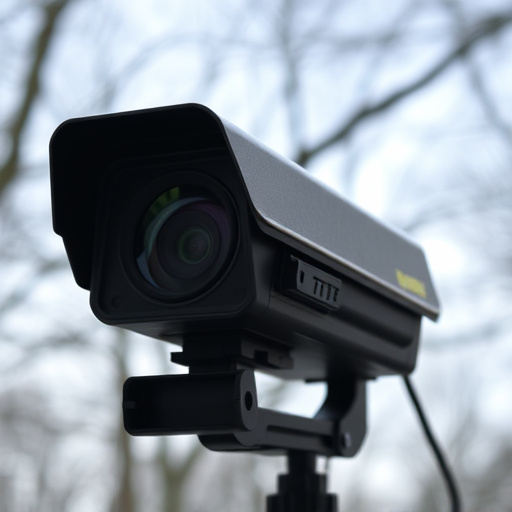Undetectable wireless security cameras, disguised as everyday objects, pose significant privacy risks in homes, offices, and public spaces. Traditional detection methods are ineffective against these advanced devices operating in low-light conditions using infrared or non-visible light spectra. Professionals use specialized thermal imaging and high-resolution optical sensor sweeps to identify them. Strategic placement near entryways, windows, and corridors enhances surveillance effectiveness while mitigating interference from structural elements or surrounding devices.
Undetectable wireless security cameras, often hidden in plain sight, pose a significant threat to privacy and security. As technology advances, these tiny yet powerful devices become more prevalent, leaving traditional detection methods struggling to keep pace. This article delves into the growing concern of undetectable cameras, exploring professional optical sensor detection sweeps as a robust solution. We’ll dissect effective techniques, best practices for camera location identification, and provide insights to empower individuals and organizations against this subtle yet critical threat.
- Understanding Undetectable Wireless Security Cameras: A Growing Threat
- Traditional Detection Methods and Their Limitations
- Professional Optical Sensor Detection Sweep Techniques
- Best Practices for Effective Camera Location Identification
Understanding Undetectable Wireless Security Cameras: A Growing Threat
Undetectable wireless security cameras, often referred to as “hidden cameras,” pose a significant and growing threat in today’s digital era. As technology advances, these devices become increasingly sophisticated, allowing them to operate with minimal power consumption and virtually undetectable presence. They can be concealed in everyday objects like clocks, smoke detectors, or even plants, making it nearly impossible for the untrained eye to identify their location. This stealth capability has led to a rise in privacy breaches and security risks across various settings, from homes and offices to public spaces.
The proliferation of undetectable wireless cameras highlights the need for professionals to stay vigilant and equip themselves with advanced detection methods. These cameras can capture sensitive information without consent, leading to potential identity theft, surveillance, or malicious data collection. As such, it’s crucial for security experts, investigators, and individuals concerned about privacy to be aware of these devices’ existence and employ specialized techniques to detect them.
Traditional Detection Methods and Their Limitations
Traditional detection methods for wireless security cameras often rely on visible light and basic sensor technology, which can have significant limitations. These methods typically involve fixed or static sensors that can be easily bypassed by advanced, undetectable wireless security cameras. With modern technology, these cameras can operate discreetly in low-light conditions, using infrared or other non-visible light spectra, making their presence nearly impossible to detect without specialized equipment.
The limitations of conventional detection techniques are particularly evident when facing the evolving landscape of security threats. Undetectable wireless security cameras pose a growing challenge for professionals due to their ability to evade standard sensor arrays and surveillance systems. This has led to a need for more sophisticated and dynamic detection methods that can keep pace with the technological advancements in the field of covert surveillance.
Professional Optical Sensor Detection Sweep Techniques
Professional Optical Sensor Detection Sweep techniques are essential for identifying undetectable wireless security cameras, which have evolved to become increasingly sophisticated in their design and functionality. Security professionals employ advanced methods that go beyond traditional visual inspections. One such technique involves specialized thermal imaging cameras that can detect heat signatures emitted by electronic devices, including hidden cameras. These tools allow experts to uncover covert surveillance equipment that might be disguised as everyday objects or seamlessly integrated into the environment.
Another powerful method is the utilization of optical sensor sweeps with high-resolution capabilities. This process involves scanning areas with advanced sensors capable of detecting subtle variations in light and reflection patterns. By analyzing these data, security specialists can identify anomalies indicative of hidden cameras, especially those with infrared capabilities or specialized lighting features designed to remain undetected. Such techniques are crucial for thorough security assessments in critical infrastructure, corporate offices, and residential properties where undetectable wireless security cameras pose significant risks to privacy and data protection.
Best Practices for Effective Camera Location Identification
Choosing the optimal location for your wireless security cameras is a critical step in ensuring effective surveillance. One of the best practices to consider is understanding the environment and potential blind spots. Undetectable wireless security cameras, while advanced, still require strategic placement to maximize their capabilities. Look for areas with clear lines of sight, avoiding corners where reflections or obstructions might hinder camera visibility.
Additionally, factoring in human movement patterns and access points can significantly improve detection accuracy. Positioning cameras near entryways, windows, or frequently used corridors ensures comprehensive coverage. It’s also advisable to test different locations to identify any interference from structural elements or surrounding devices, ensuring the best possible video feed quality for optimal sensor detection performance.
Undetectable wireless security cameras pose a significant threat to privacy and security, but with advanced professional optical sensor detection sweeps, these hidden devices can be identified. By understanding the limitations of traditional methods and adopting best practices for effective camera location identification, experts can stay ahead of this growing challenge. Utilizing cutting-edge techniques ensures that undetectable cameras are no longer invisible, allowing for proactive measures to protect sensitive areas.
